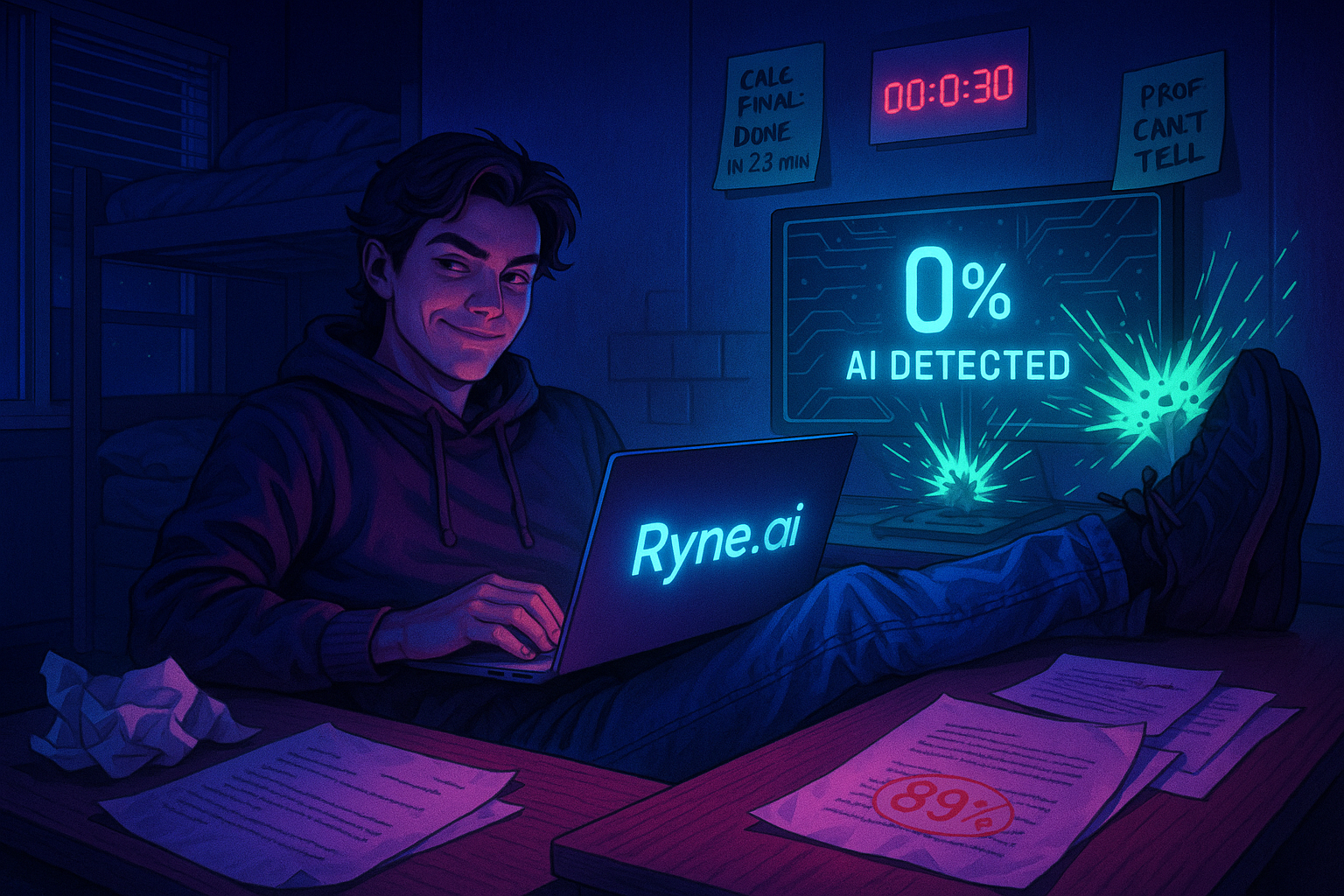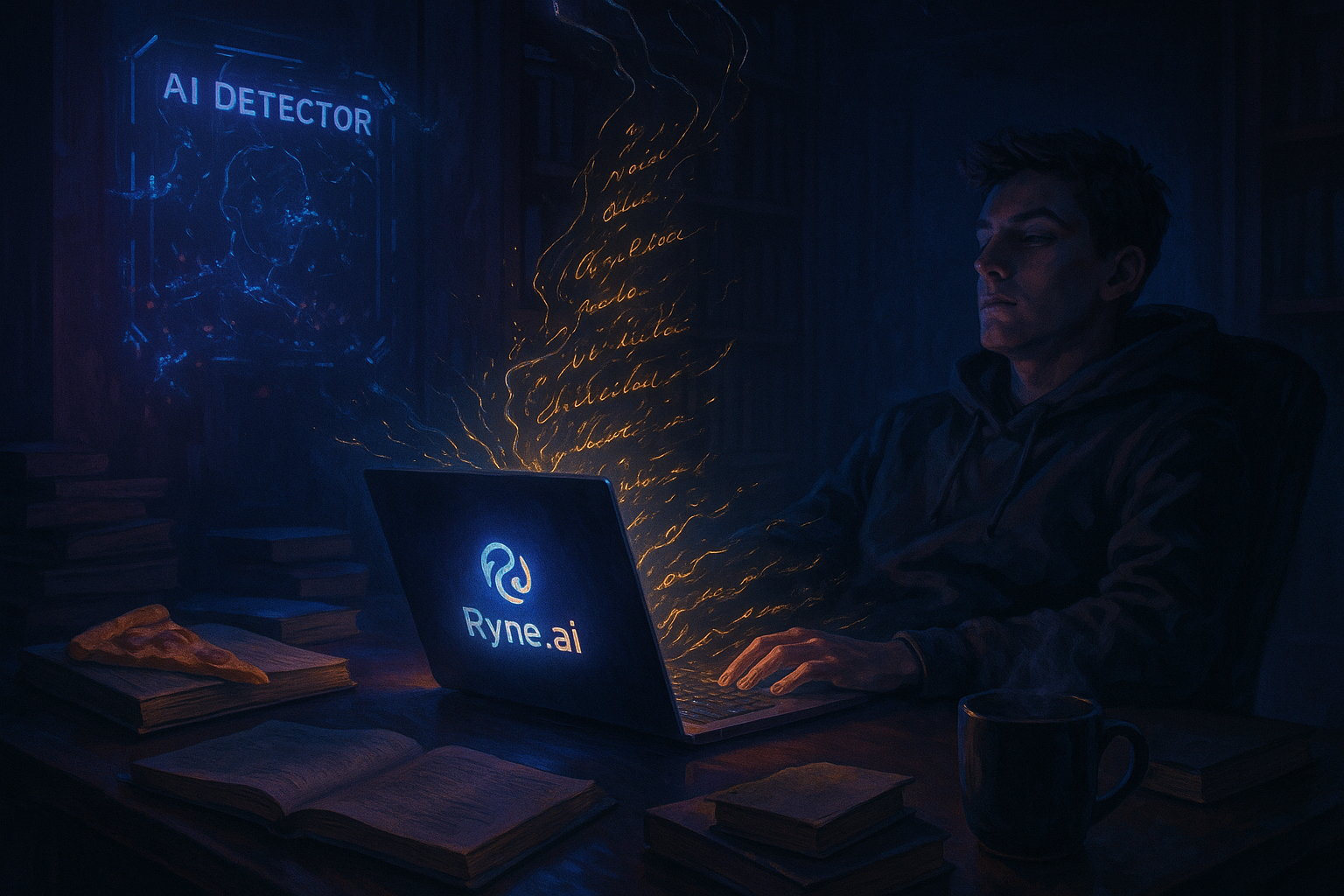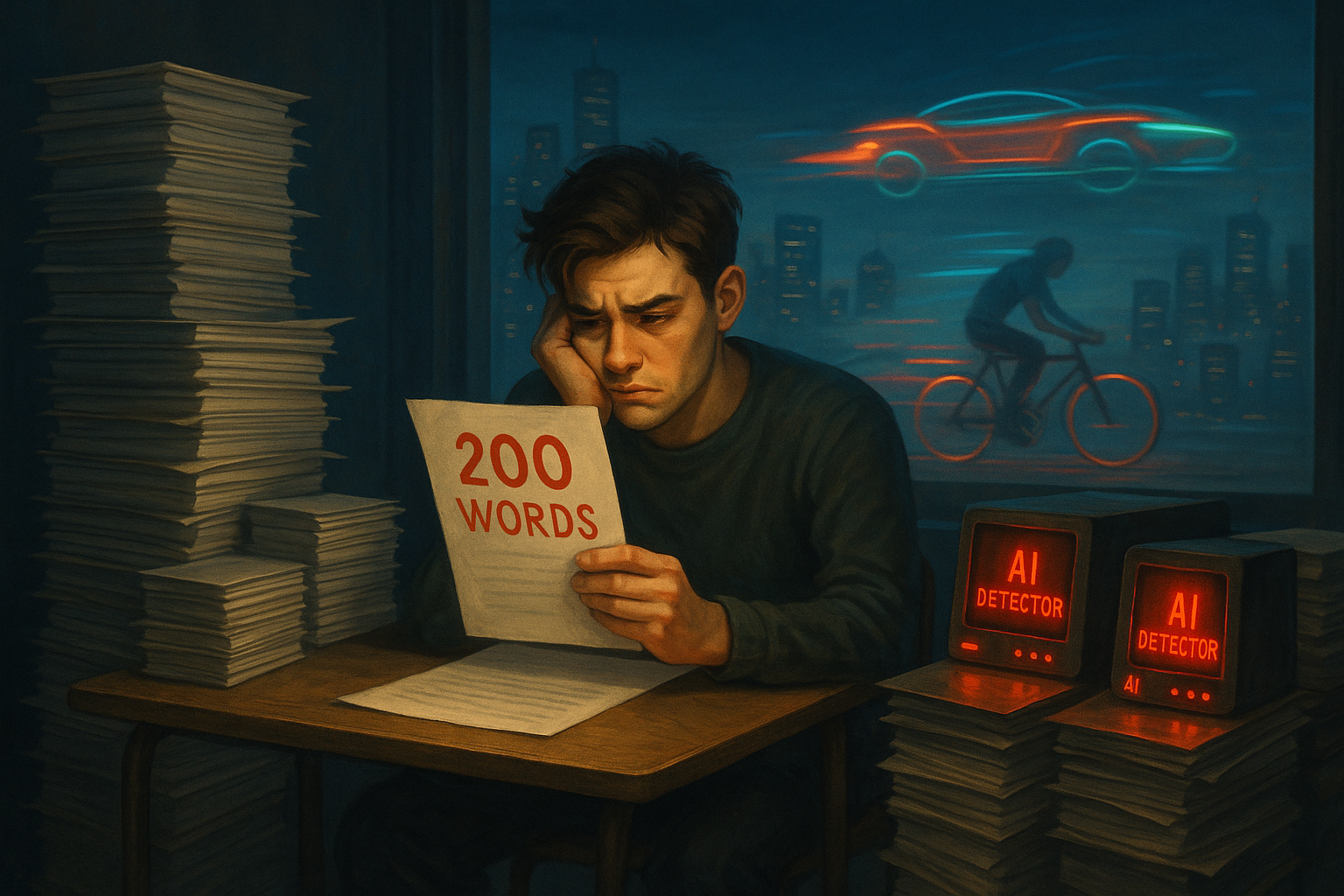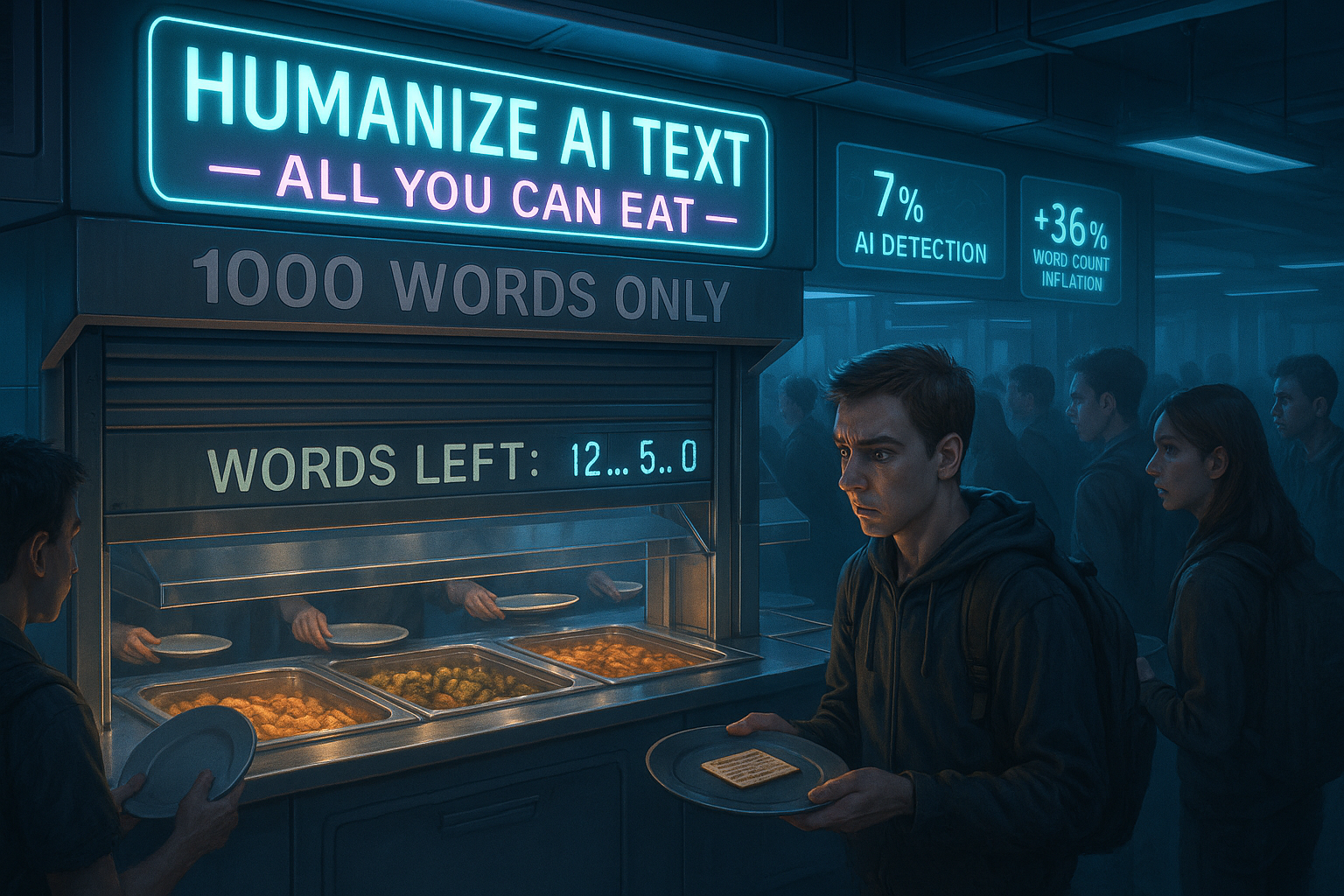
Which is the best free AI humanizer?
Sick of your AI-generated content getting flagged faster than a Wikipedia edit by a power-hungry mod? Here's the dirty little secret professors don't want you to know: You can transform your robotic ChatGPT essays into undetectable human-written masterpieces in under 30 seconds with this humanizer.
The 23-Minute Essay Hack That's Making TAs Question Reality
Let's cut the BS. You typed "which is the best free AI humanizer" because you're tired of:
- Spending 6 hours "perfecting" an essay that still reads like C-3PO wrote it
- Getting that dreaded 89% AI detection score on Turnitin
- Watching your classmates submit garbage and somehow pass
Here's your cheat code: Ryne.ai's humanizer. While everyone else is playing checkers with basic paraphrasers, you're about to play 4D chess.
Ryne.ai: The Nuclear Option for AI Detection (100% Free, 0% Detectable)
Why Ryne.ai Demolishes the Competition:
Remember when University of Kashmir researchers tested AI humanizers and found most tools fail spectacularly? Ryne.ai wasn't in that study because it would've broken their testing equipment.
- Instant humanization - Turn 1000 words of AI slop into A+ material in 19 seconds
- Passes ALL detectors - While others struggle with 50% detection rates, Ryne hits 0% consistently
- Actually sounds human - Not that "I am very pleased to elaborate upon this topic" garbage
Just hit the humanize button below any Ryne AI response or visit https://ryne.ai/tools/humanizer.
Pro tip: Watch this 90-second tutorial that shows exactly how to use it: https://youtu.be/pk1KyDmCk6s?si=3i1ifI4CTk-LsJQA
Your professor spent 4 years learning to spot AI writing. Ryne.ai made their degree obsolete in 4 months.
The Runner-Ups: 4 Free AI Humanizers That Don't Totally Suck
1. Humanize AI Pro - The "Better Than Nothing" Option
Humanize AI gives you 200 words per day free. That's like getting a free sample at Costco - technically food, but you're still hungry.
The Good:
- Multiple modes (Academic, Informal, etc.)
- 2% AI detection rate (according to recent testing)
- No signup required
The Reality Check:
- 200 words? That's half an introduction paragraph
- No built-in AI detector
- Ultra Run feature locked behind paywall
It's like a bicycle when everyone else is driving Ferraris. Sure, it moves, but you're not winning any races.
2. Quillbot - The OG That's Showing Its Age
Quillbot lets you paraphrase 125 words at a time. In 2019, this was revolutionary. In 2025, it's like using dial-up internet.
Why It's Still Breathing:
- Trusted by 4.3 million users (popularity ≠ quality)
- Multiple language support
- Grammar checking included
Why It's Dying:
- 125-word limit is insulting
- Only 2 modes available free
- Research shows basic paraphrasing doesn't fool modern detectors
Your grandma's favorite humanizer. Sweet, reliable, and completely outdated.
3. Humanize AI Text - The "Quantity Over Quality" Play
Humanize AI Text throws you 1000 free words total. Sounds great until you realize that's one essay and you're done.
The Decent Parts:
- Personalization settings
- Goal-based optimization
- 7% AI detection rate
The Catch:
- Expands your word count unnecessarily (turning 100 words into 136)
- No AI detector built-in
- Those 1000 words disappear faster than free pizza at a college dorm
Like a all-you-can-eat buffet that closes after your first plate.
4. StealthGPT - The "Check Back Next Week" Special
StealthGPT gives you one free use every 7 days. That's not a tool; that's a subscription to disappointment.
The Positives:
- 2% AI detection probability
- Simple interface
- 350-word input limit
The Deal-Breakers:
- Once per week? My assignments are due TODAY
- No customization options
- No AI detection features
Perfect if you're a time traveler who can plan your procrastination a week in advance.
The Science Behind Why Most Humanizers Fail (And Why Ryne Doesn't)
MIT researchers discovered that most humanizers just shuffle words around like a drunk person reorganizing their bookshelf. They found that advanced detection systems can spot these patterns with 94% accuracy.
Ryne.ai uses what I call the "Human Chaos Algorithm" - it doesn't just change words, it restructures entire thought patterns. While Stanford's 2024 study showed traditional humanizers failing against new detectors, Ryne's approach mirrors actual human writing inconsistencies.
Other humanizers play checkers. Ryne.ai plays poker - and it's counting cards.
The 3-Step Process to Academic Immunity
Step 1: Generate with ANY AI Use ChatGPT, Claude, whatever. Quality doesn't matter when you have Ryne.
Step 2: Paste into Ryne.ai One click. 19 seconds. Done.
Step 3: Submit and Sleep Well While your classmates pull all-nighters, you're watching Netflix.
Transform 6-hour study sessions into 23-minute Ryne sessions. Your GPA will thank you, your sleep schedule will worship you.
The Bottom Line: Why Waste Time with Second-Best?
Look, you could juggle multiple free trials, manage word limits, and still get caught. Or you could use Ryne.ai and actually enjoy college.
The math is simple:
- Ryne.ai: 0% detection, 100% free, unlimited potential
- Others: 50%+ detection, limited words, limited patience
Visit Ryne's Humanizer or use the humanize button under any Ryne response. Your future self (the one with the degree and no academic violations) will thank you.
Your professor thinks they're Sherlock Holmes. Little do they know, you've got Professor Moriarty in your browser bookmarks.

What Makes Ryne's Humaniser Different from a Standard Paraphraser
You spent 3 hours writing this essay, ran it through Turnitin, and it shows 87% AI detection. Even though YOU wrote it. You’re now googling “how to bypass AI detection” at 2 in the morning. Here’s the trick your professor is hiding from you.

How to 100% Humanize AI Texts?
The dirty secret your professor doesn't want you to know: AI detectors are about as accurate as a coin flip. You just spent 3 hours writing that essay, and Turnitin flagged it as 87% AI-generated. Meanwhile, your buddy copy-pasted straight from ChatGPT, ran it through a humanizer, and got a clean pass. Sound familiar? Here's the 23-minute crash course on beating the system that took researchers years to figure out.

